blog
Book Review: Night on Earth by Art Wolfe
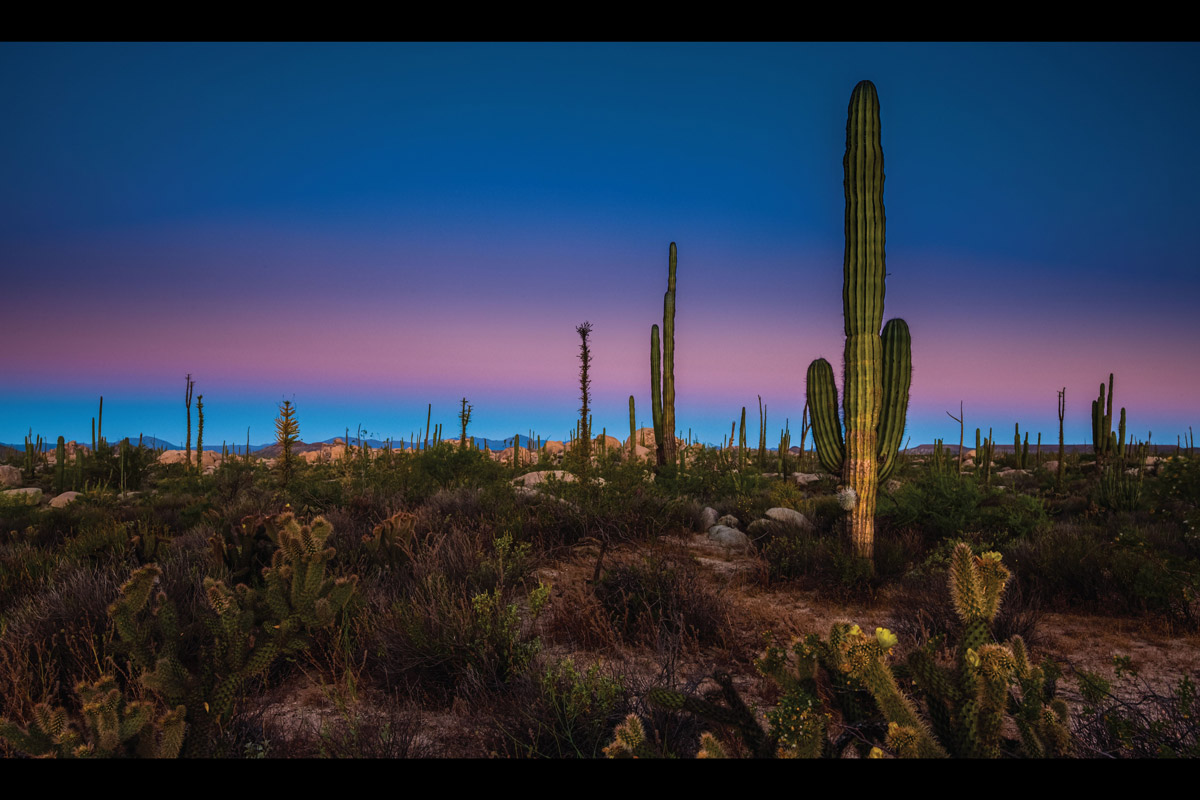
Cataviña Desert, Baja California, Mexico
“Every night, an unseen buzz of activity takes place all around the globe,” I read on the blurb of this formidable work. This reminds me of a talk given 14 years ago in Southern California by a biologist who informed the listeners about the dangers of artificial light during nighttime. I specifically remember being stunned that lots of birds regularly fly into brightly lit skyscrapers. Needless to say that when thinking about it this hardly comes as a surprise; the problem however is that we do not seem to think about it or, if we do, do not care much about dead birds falling to the ground because of artificial light.
In his foreword, Ruskin Hartley of the International Dark-Sky Association (IDA) – an organisation dedicated to treating the nighttime as a precious but threatened resource – relates how his family, when moving from the San Francisco Bay Area to Tucson, Arizona, learned a powerful lesson. “Contrary to common belief, more light does not necessarily enhance visibility or the sense of safety.” Moreover: “Light pollution is destroying natural darkness with severe consequences: It is linked to a global insect decline, the death of millions of migrating birds, increased carbon emissions and increased disease in humans.”
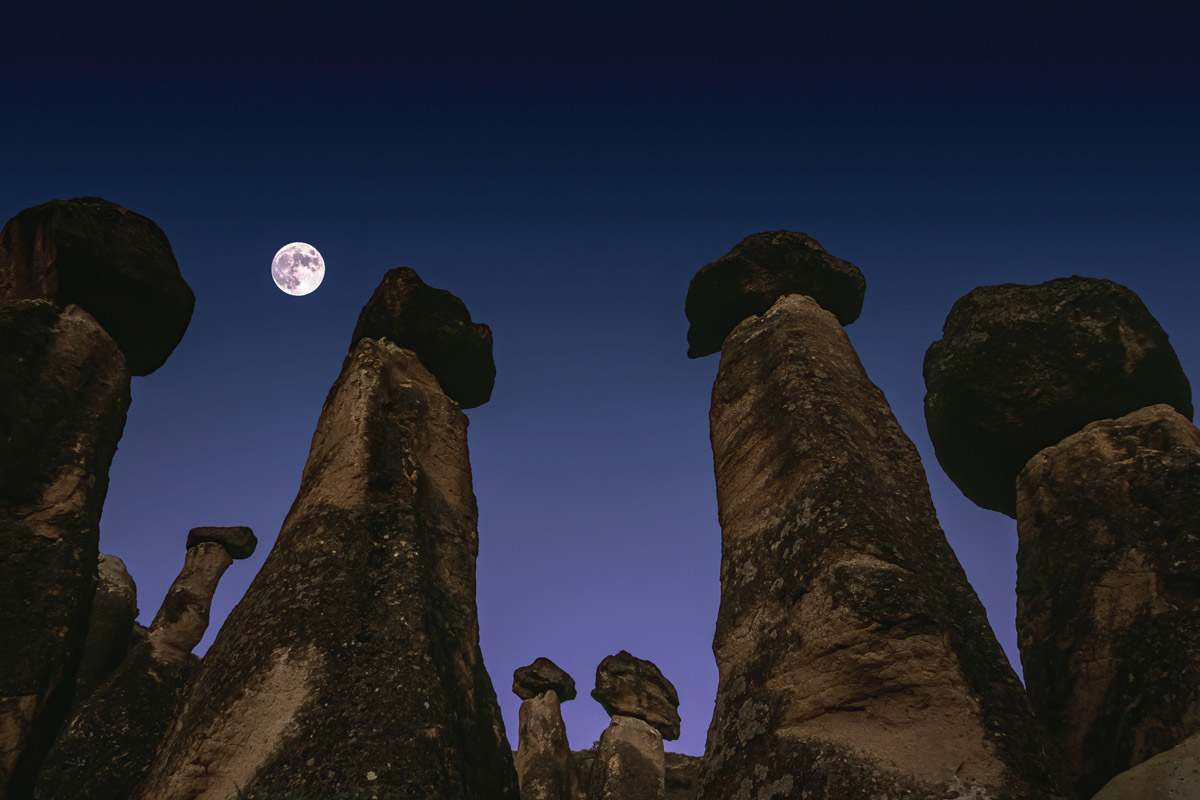
Full moon at dawn over tufa fairy chimneys, Cappadocia, Turkey
Dark-skies are in fact not dark but alive with light – and this is what you get to see in Art Wolfe’s photographs that show “the natural light of the night, from the moon, stars, aurora, and airglow.” Up to a point, that is, for you will also get to see quite some artificial light that illuminates the night.
“Light is easy. Dark requires patience and imagination,” David Owen opines in his introduction. And, while I like the catch-phrase quality of the thought, and I’m especially fond of that he underlines the need for patience, I think his statement way too simple. The world, as I see it, does not lend itself to strict opposites such as night and day, black versus dark or natural versus artificial light. I do however totally agree with his “You don’t have to believe that the stars and planets are gods or demons in order to be awed by the nighttime sky. But in order to be awed by it, you have to be able to see it.”
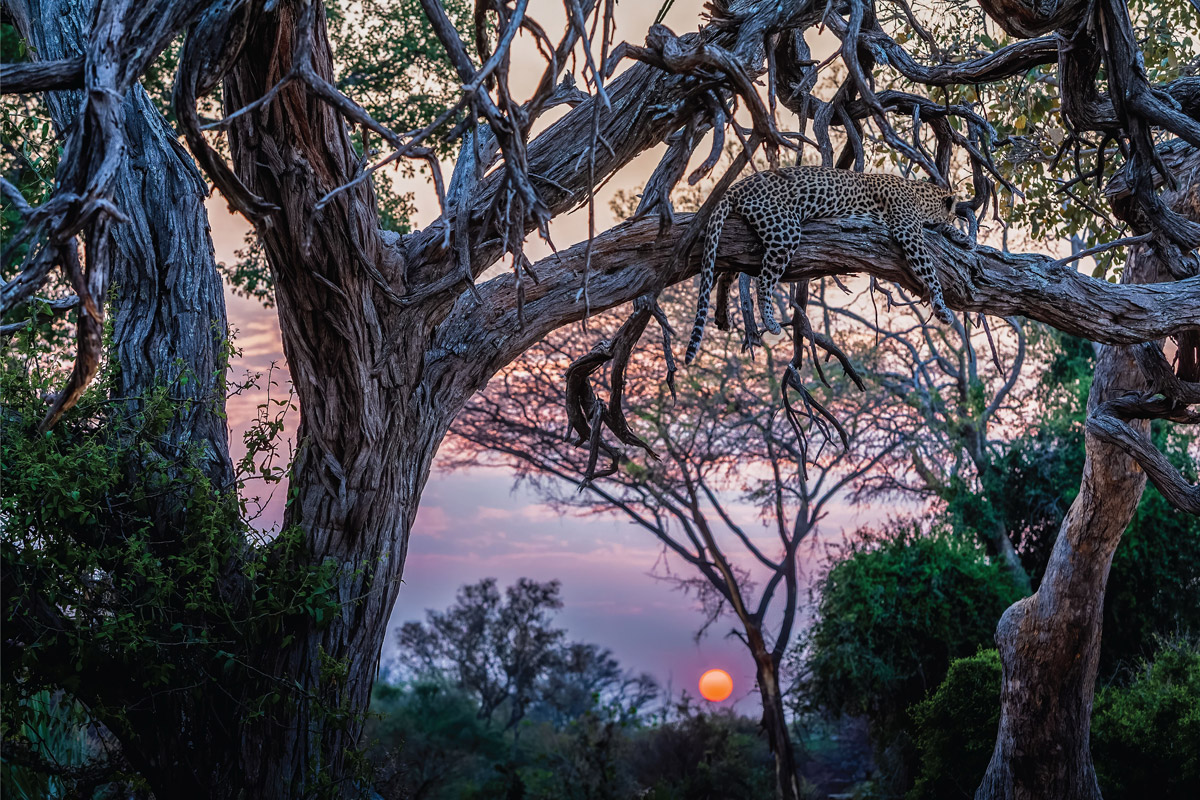
Leopard (Panthera pardus) in thorn tree (Vachellia sp.), Chobe National Park, Ngamiland, Botswana
Since patience does not come easily to anybody, we are well-advised to become ready to learn it. Not only in order to enjoy the awe inspiring nighttime sky but also because our existence on planet earth needs to be seen as what it is – the presence is a presence! It also needs to be stressed that light pollution has to be seen in a wider context. We are visitors on planet earth, and we should behave like visitors – respect nature of which we are a part, that is.
David Owen’s introduction is an illuminating read – I’ve become aware of quite some things I’ve rarely given a thought. “Gas stations are among the world’s most brightly lit commercial establishments,” I read. Or, “By over-illuminating the world at night, we have washed out the sky above.”
Quite some travelling around the globe has been involved in order to photograph the various sites you will encounter in this book. What impressed me most were the many unusual angles that Art Wolfe choose to frame what he saw – my favourite shows the eastern span of the San Francisco-Oakland Bay Bridge. And, then there’s the truly fabulous shot of the Mauna Kea Observatories in Hawaii. And and and … I could go on pretty much endlessly …
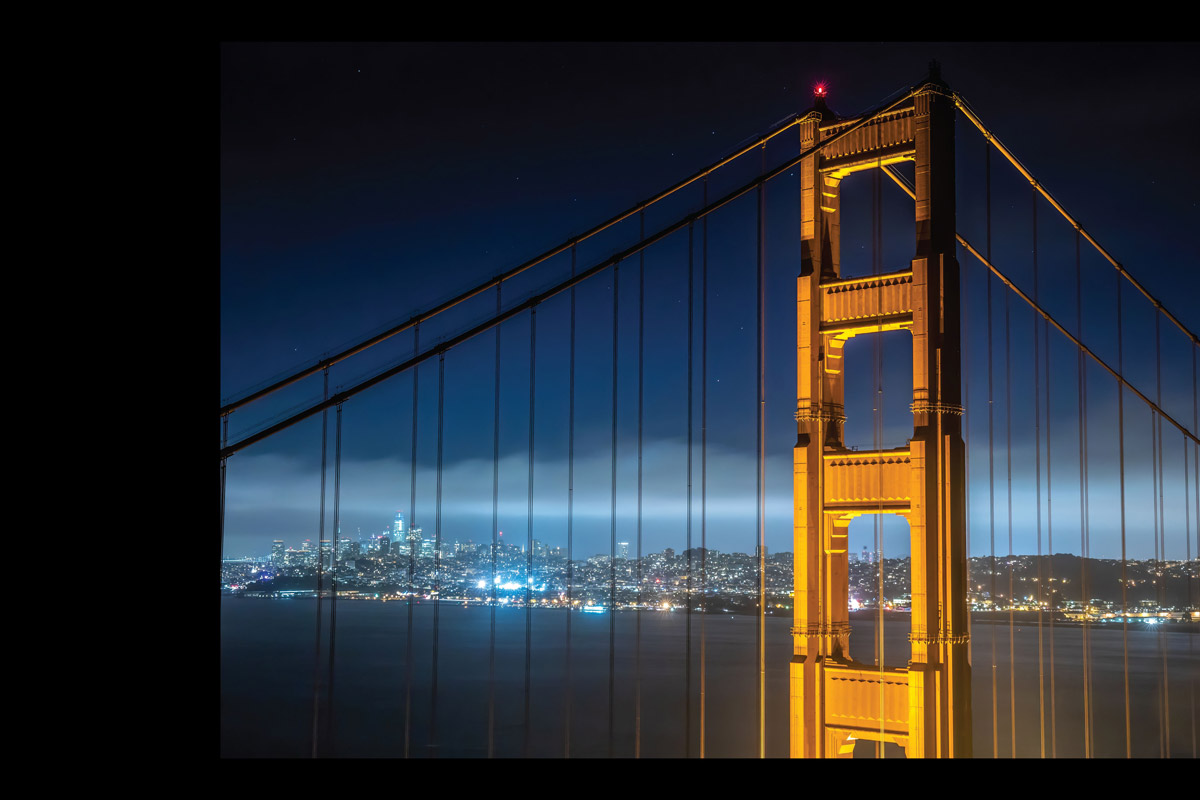
Golden Gate Bridge photographed from Marin Headlands looking south to San Francisco, California, USA
The way these photos have been arranged is a feat in itself. Some fill the full page, for others a smaller format has been used. And, then there’s of course the question what picture to put next to the other. I felt particularly enchanted by the following order: the Norwegian town of Reine, Peggy’s Cove in Canada’s Nova Scotia, oxcarts in the morning mist of Mandalay in Myanmar. But what do the three have in common? you might ask. Indeed: Different climate, different architecture, different ways of life. Even more enjoyable it is to see them placed next to each other and to experience them to coexist so effortlessly. Just look and see!
Night on Earth is divided into four sections: Stars and Shadows (that also includes volcanic eruptions), Creatures of the Night (think of owls, hyenas cougars …), Embracing the Night (“Rituals of fire and water thrive in the dark …”), The Intuition of Light (mostly a display of man made light).
In sum: Spending time with the photographs in this tome fills me with awe, and does instill profound respect in me. It is a very beautiful and most necessary work.
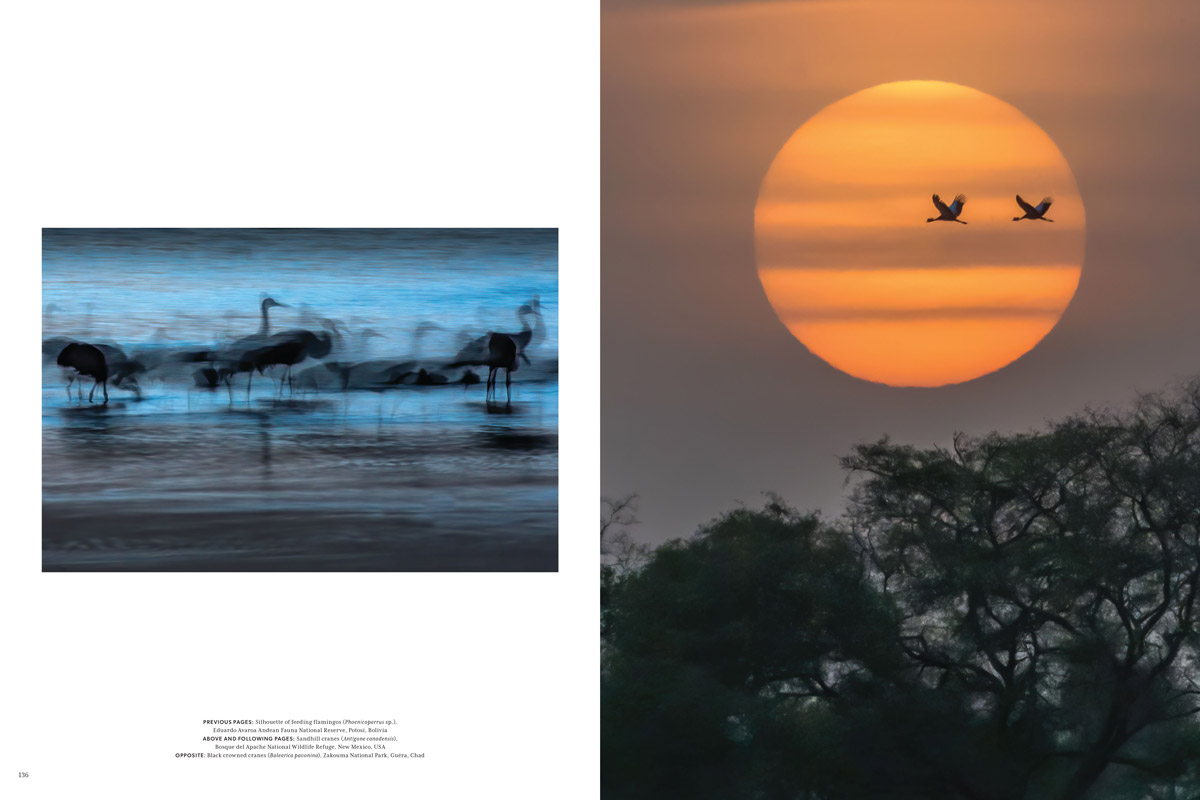
Sandhill cranes (Antigone canadensis) Bosque del Apache National Wildlife Refuge, New mexico, USA / Black crowned cranes (Balearica pavonina), Zakouma National Park, Guéra, Chad
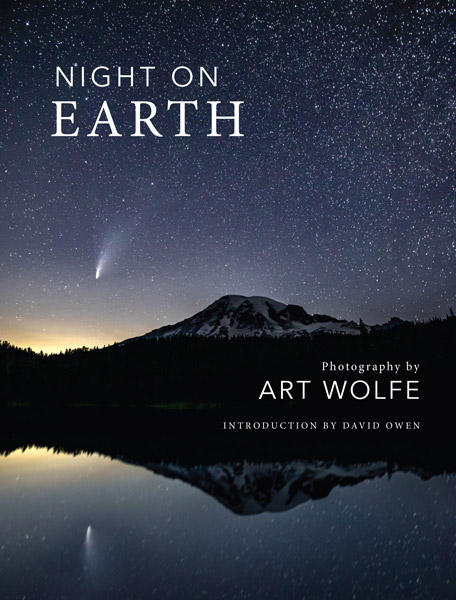
Night on Earth
Photography by Art Wolfe
Introduction by David Owen
Earth Aware, San Rafael ° Los Angeles ° London
www.mandalaearth.com
Location: Online Type: Book Review, Landscapes, Night
Events by Location
Post Categories
Tags
- Abstract
- Alternative process
- Architecture
- Artist Talk
- artistic residency
- Biennial
- Black and White
- Book Fair
- Car culture
- Charity
- Childhood
- Children
- Cities
- Collaboration
- Community
- Cyanotype
- Documentary
- Environment
- Event
- Exhibition
- Faith
- Family
- Fashion
- Festival
- Film Review
- Food
- Friendship
- FStop20th
- Gender
- Gun Culture
- Habitat
- Hom
- home
- journal
- Landscapes
- Lecture
- Love
- Masculinity
- Mental Health
- Migration
- Museums
- Music
- Nature
- Night
- nuclear
- p
- photographic residency
- Photomontage
- Plants
- Podcast
- Portraits
- Prairies
- Religion
- River
- Still Life
- Street Photography
- Tourism
- UFO
- Water
- Zine

Leave a Reply